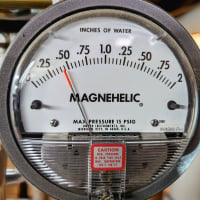Best Of
Re: Best Material to Use for Drainpipes in Residential Homes.
Rodents love, love, LOVE fiberglass. Rockwool may be better.
Re: Best Material to Use for Drainpipes in Residential Homes.
I see Pace Supply carries solid ABS.
A bummer for suppliers that carry 4 inventories of PVC and ABS pipe. Plus CPVC?
 hot_rod
hot_rod
Re: Best Material to Use for Drainpipes in Residential Homes.
Hi @ethicalpaul , Honest questions are good. As HR said, PVC drain pipe and fittings are essentially not available where I am, so the realistic choices for me are cast iron and ABS. I do wish we had never gone to foam core pipe. The only benefit is in up front cost. Orangeburg probably holds up better 🙀
Yours, Larry
Re: Best Material to Use for Drainpipes in Residential Homes.
Yeah, I suppose we better knock down 99% of the buildings in the US and Canada......
If rodents are getting into the building the choice of insulation isn't the problem.
 ChrisJ
ChrisJ
Re: Nothing happens at all when Beckett boiler reset button is pushed
The longer trial for ignition is no longer Code compliant. Say the burner tried to start and the ignition was iffy- the motor and fan introduced air and oil to the firebox, but it didn't light until 38 seconds in- this would result in a "backfire" or "puffback" which would blow smoke and soot all over the place. Not good.
Some even older controls had 60- to 90-second trials for ignition- they were truly scary. There really is no reason to continue to sell any control with longer than 15-second TFI.
Re: Electrical
I don't get the need for a summer/winter switch.
What is is supposed to do?
Disabling one boiler in the heating season will cause it (the idle boiler) to fill with condensate.
Disabling it any time will screw up the DHW. You will be putting cold water through one coil mixing it with the hot DHW
Re: Replacing iron pipe / Non-filling radiator
Useful info would be how hot do you need to supply the radiators on the coldest day. Backing down the SWT or using outdoor reset will help comfort and maximize boiler efficiency.
 hot_rod
hot_rod
Re: If you are not using AI....
Careful. Like Googling spelling, "AI" is based on what everyone else is doing, not what is correct. It's a step or two before "trust but verify".
Computers don't think, & there aren't any signs that they ever will. People are just really bad at telling the difference. They can, however, add really well, provided they get the right numbers.
Re: Replacing iron pipe / Non-filling radiator
The size pipe really has to do with the size of the radiator and` the heat load of the room it is in. In some, many cases 1/2" pex is adequate. It can deliver 15,000 btu/hr
Here is a conservative pipe flow chart. Note the 1" pex is quite a bit less flow than 1" copper due to ID.
A home run with 1/2 pex to each radiator might be an option. Locate a manifold in a 2nd floor closet, feed it with 1" pex. Each radiator could be. zone with manifold actuators or TRVs at the radiators.
An example with a ∆P circulator.
 hot_rod
hot_rod
Re: Replacing iron pipe / Non-filling radiator
Changing the pipe to a smaller size may upset the existing balancing. I am not saying you shouldn't go to a smaller pipe just be ready for it. I would not use Pex above 3/4" you will find Pex in the larger sizes difficult. I would use copper.
You need to look at the radiation size to determine which size pipe to use.
As far as the problem radiator goes put a 0-5 or 0-10 psi gauge on the radiator vent location and fill the system until that gauge reads 4-5 psi.



